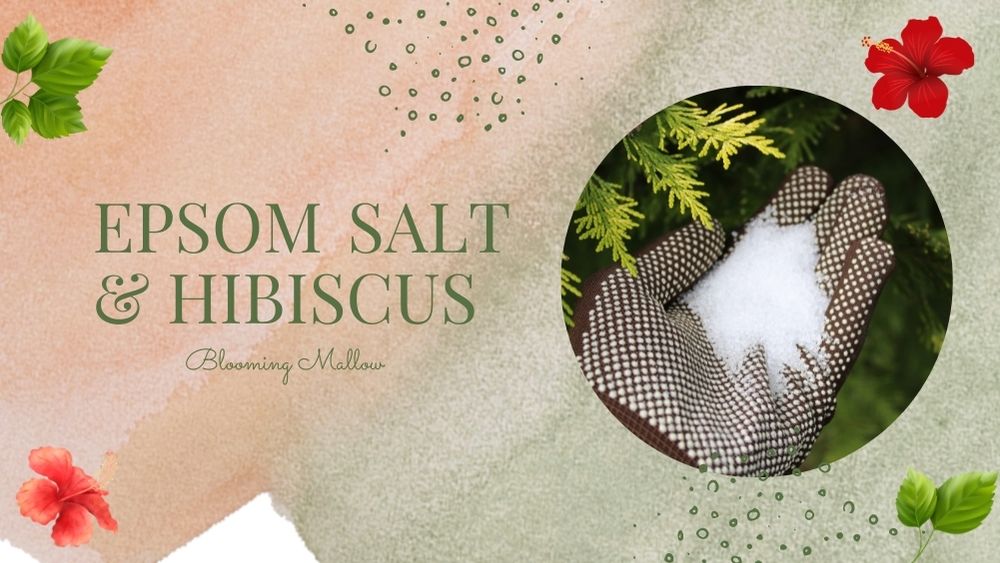
Epsom salt is widely used not only in the field of medicine and health, but also in agriculture and gardening. Many gardeners actually claim that this miracle product reduces yield losses to a certain extent. This is because by using Epsom salt the plant is enriched with both magnesium and sulfur. Moreover, this salt can either be mixed into fertilizer or can be used as a direct supplement to specifically address magnesium deficiency.
But what benefits (if any) does it have on hibiscus? Let’s take a look.
What Is Epsom Salt?
Named in honor of the English town where it was first discovered, Epsom salt (also known as Epsomite) has a white crystalline structure, similar to that of table salt or sodium chloride. It is comprised mainly of magnesium sulfate heptahydrate, which is a mixture of three components: magnesium, sulfur and oxygen. It is water soluble, odorless and has a very salty, bitter taste.
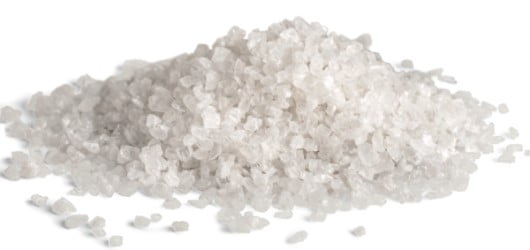
On an average, Epsom salt (MgSO₄) consists of about 15% magnesium oxide and 30% sulfuric anhydride. However, these values can vary from brand to brand or depending on the raw material used.
This composition makes it quite evident as for which deficiency this salt can be used, i.e., both magnesium and sulfur. Which is why, it is commonly used in gardens and indoor plants that require immediate attention.
How Does Magnesium Deficiency Manifest Itself In Hibiscus Plant?
In principle, almost all varieties of soil contain magnesium, including garden and potting soil. However, this mineral is consumed differently by every hibiscus, depending on its specific requirements. Moreover, the larger your hibiscus, the greater will be its demand for this mineral.
Magnesium deficiency can also arise from natural causes, such as heavy rain, that leaches magnesium from the soil. And apart from any natural causes, this deficiency can also result due to antagonistic behavior among two or more minerals. This is particularly evident while supplementing Hibiscus with potassium rich fertilizers, that tend to displace magnesium ions from the roots.
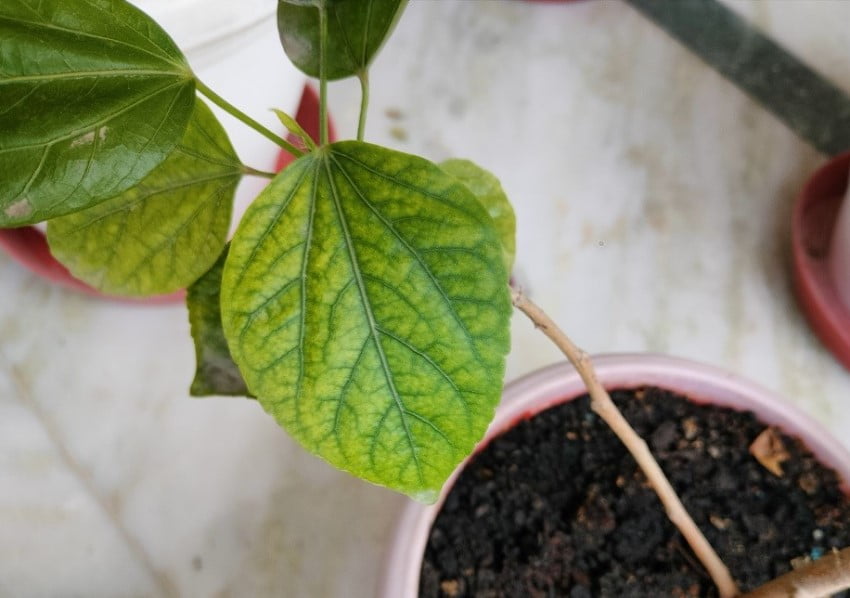
When magnesium is deficient, chloroplast (a plastid in green plant cells which contains chlorophyll) in older leaves is broken down, and the magnesium is then transported to younger shoots. This is why signs of deficiency are first visible on the medium-aged, large leaves of hibiscus.
In simple language, Mg deficiency is first visible on older leaves because magnesium is mobile in the plant and is transported from older leaves to new leaves.
Primary symptoms of deficiency include leaf discoloration, i.e., older leaves will turn yellow while their veins will remain green.
And while a minor deficiency may go unnoticed for several months, an acute deficiency can be detected within 7 days following the application of NPK fertilizer.
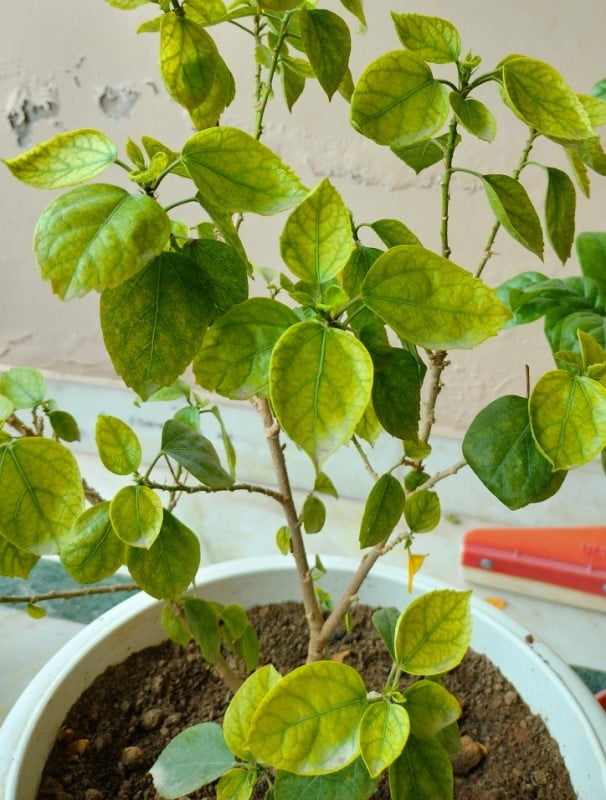
If left unattended, these symptoms will spread to the entire plant, rendering even the youngest leaves to become chlorotic thereby halting the entire growth.
Iron and magnesium deficiency can have almost identical symptoms in hibiscus. The only difference is that the iron deficiency is noticeable only on the younger leaves. This is the only way to determine whether you need to fertilize with Epsom salt or not.
What Does Epsom Salt Do To Hibiscus Plant?
Magnesium is an essential macronutrient that Hibiscus needs. It serves as a building block for the synthesis of chlorophyll and is therefore essential for photosynthesis. In fact, it is one of the most important plant nutrients after nitrogen, phosphorus and potassium. Which is why, the supply of magnesium has a direct impact on the growth of Hibiscus.
In addition, magnesium plays an important role in various metabolic processes: It activates numerous enzymes involved in energy transfer and plays a crucial role in the conversion of nitrogen into protein.
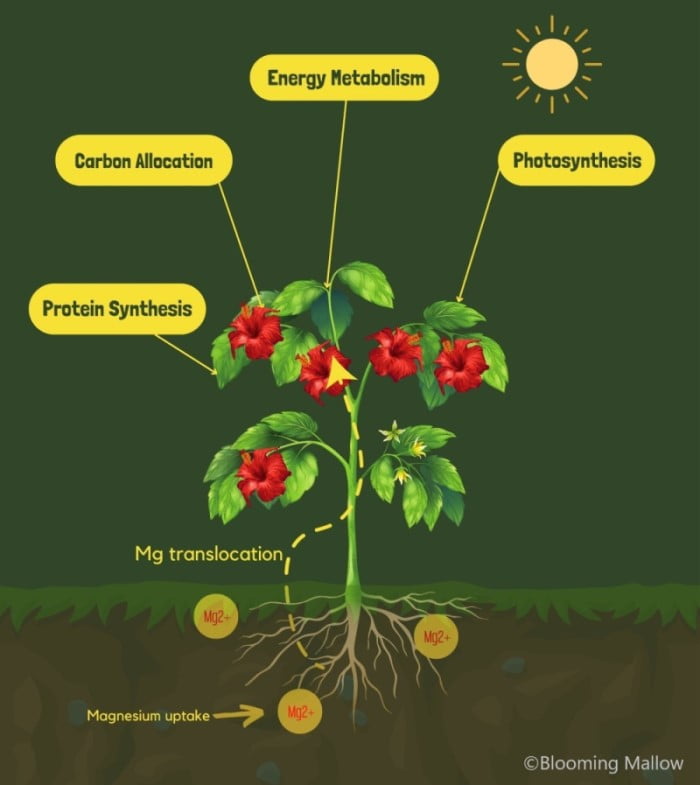
Epsom salt or magnesium sulfate is primarily used to supplement plants with magnesium. Owing to high magnesium content, it ensures rapid absorption so that the green leaves do not suffer any deficiency.
In addition, Epsom salt has a neutral pH, which means that it does not increase or decrease the acidity of the soil and thus preserves all the original characteristics of the soil.
Importance Of Adding Magnesium In Hibiscus
Hibiscus requires potassium (K) in large quantities – it’s the last ingredient mentioned on the NPK fertilizer which you may have noticed on the container of your plant food.
This mineral (potassium) is essential for every inch of growth in hibiscus and is of utmost importance in flowering. And because of such immense potassium requirement by Hibiscus, hobby gardeners sometimes tend to overdo it, which may in turn create a deficiency of magnesium.
To further explain this in detail, let’s look at how fertilization actually works on Hibiscus.
Plants have two transport systems – Xylem and Phloem. All nutrients are channelled mainly through these transporters. However, the absorption mechanism of these nutrients, especially potassium and magnesium, is different.
Magnesium ions (Mg2+) are absorbed by Hibiscus (or any plant in this case) through one single route – and this route can also be used by minerals such as potassium.
Potassium, on the other hand, uses multiple routes, depending on the availability, to enter the plant system. So, it can use a dedicated route like magnesium, or it can choose to enter through any alternate route.
Think of it like having a house with multiple doors – where person “A” can use a specific gate, while person “B” can use any gate as he likes. So, in case person “A’s” gate is blocked, he may not be able to enter the house. But person “B” can enter through any other gate he desires.
For this reason, a very high supply of potassium, which is loved by hibiscus, can block magnesium uptake since it can only enter through a single route.
However, high magnesium presence in the soil does not affect potassium absorption in any way.
It is therefore advised to balance out the potassium-magnesium ratio by additionally mixing Epsom salt in potassium rich fertilizers (like NPK), thereby aiding Hibiscus to absorb both minerals efficiently.
This Is How You Can Add Epsom Salt To Hibiscus Plant
In case of visible symptoms of deficiency: spray both on the leaves and the soil. This will ensure maximum absorption by the plant. For general application, follow the below recommendations:
- Add 5 grams of Epsom salt to a 4″-6″ Hibiscus pot
- Add 10 grams of Epsom salt to 8″-12″ Hibiscus pot
- Add 15 grams in case of a large garden hibiscus
In order to maintain the magnesium level in your hibiscus garden, you must first determine the soil type. For a light sandy soil or a soil rich in cocopeat, water will drain much faster into the ground, resulting in excessive magnesium leaching. For this reason, you need to add magnesium to the soil frequently.
However, for thick clay soils or soils that tend to get waterlogged, the likelihood of leaching is quite low. For this reason, fertilization with magnesium should be done occasionally (once every 2-3 months) or while fertilizing with potash-based minerals.
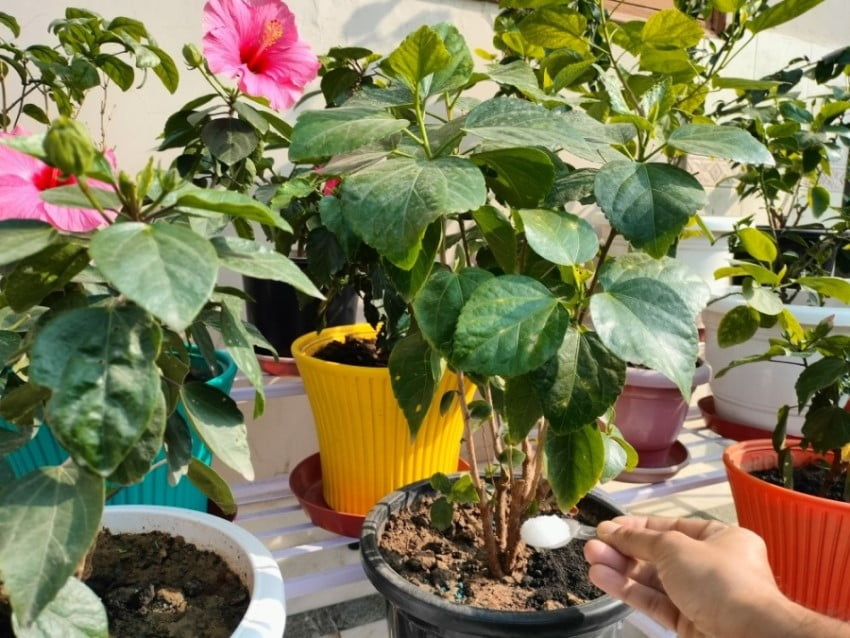
Also, while using potash-based fertilizer, you need to calculate the amount of potassium you are adding to soil. Post which, you will need to add 1 part of magnesium for every 10 parts of potassium.
For example, if you are adding NPK fertilizer 15-5-20 (15% nitrogen – 5% phosphorus – 20% potassium) to your hibiscus plant, you will also need to mix it with 2% Epsom salt so that the high dose of potassium does not interfere with the absorption of magnesium.
Don’t stress: Each time you fertilize your hibiscus with potassium, remember to mix two pinches of Epsom salt into it. And don’t forget to water the plant thoroughly to make sure all of the nutrients are evenly distributed into the soil.
General guidelines before using Epsom salt on hibiscus
Epsom salt is available both in granular and liquid form. Granules are generally cheap and can be worked directly into the soil by mixing it with water. Whereas, liquid Epsom fertilizer can be used for foliar spraying in case of acute magnesium deficiency.
While using Epsom salt, keep these things in mind:
- Remember to water the plant after fertilizing
- In acute cases, spray Epsom salt water directly on the leaves
- Do not add Epsom salt on a sunny day (risk of burn)
- Do not add Epsom salt directly into the roots
- Wear gloves all the time
Advantages Of Using Epsom Salt In Hibiscus Garden
Supports Germination: The generous amount of magnesium in Epsom salt strengthens cell walls, allowing freshly sowed Hibiscus seeds to gain more energy and vigor during germination. All you need to do is mix a tablespoon of Epsom salt into the soil before sowing.
Deters Pests: Insects in the garden are a nuisance for which there seems to be no solution. The use of Epsom salt is beneficial here, as it not only drives away insects and bugs, but also provides magnesium to the plants at the same time.
Prevents Root Shock: In case you are repotting or transplanting your Hibiscus, simply add some Epsom salt in water and dip the roots directly into this solution – By doing this you can revive your hibiscus from transplant shock pretty quickly!
Beautifies Patio: If you want a lush green patio covered with blooming mallows; just sprinkle Epsom salt over the soil before watering (about 500 grams of salt per 50 square meters of lawn).
Bottom Line
Epsom salt is a wonderful and organic ingredient that provides Hibiscus with an extra dose of magnesium and sulfur. An added benefit is that you really can’t go wrong with it – slight increase in dosage will have no negative effect on your Hibiscus.
And you don’t have to be an expert gardener to use it – all you have to be is consistent. Once you notice some positives in your Hibiscus, you will surely be motivated to continue using it. Plus, its readily available and really very cheap.
Before I end this article, a word of caution: Agricultural or industrial grade Epsom salt is only intended to be used in gardens. Despite being safe, Epsom salt has natural laxative effect, so keep it away from children and pets. Also, magnesium sulfate gets absorbed through skin, so be sure to wear gloves all the times while using this salt.
Looking for more natural ways to care for your hibiscus? Take a look at our article on the advantages of using vinegar on Hibiscus plant.
Good luck and happy gardening. 😊

